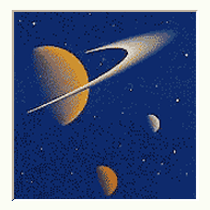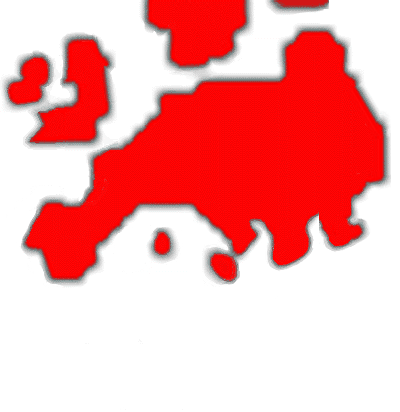CASSINI-HUYGENS Cluster II Wave Experiment Consortium (WEC)
 The
European Space Agency's Huygens probe is heading for Titan, Saturn's
largest moon, aboard NASA's Cassini spacecraft. Titan's orange,
chemical-heavy atmosphere is thought to resemble that of a young Earth,
meaning it could hold the secret to the origins of life. Huygens will
penetrate the moon's atmosphere and, during a brief descent, analyze the
physical and chemical environment. The probe is named after Dutch
astronomer Christiaan Huygens (1629-95) who first detected Saturn's rings
and its giant moon.
The
European Space Agency's Huygens probe is heading for Titan, Saturn's
largest moon, aboard NASA's Cassini spacecraft. Titan's orange,
chemical-heavy atmosphere is thought to resemble that of a young Earth,
meaning it could hold the secret to the origins of life. Huygens will
penetrate the moon's atmosphere and, during a brief descent, analyze the
physical and chemical environment. The probe is named after Dutch
astronomer Christiaan Huygens (1629-95) who first detected Saturn's rings
and its giant moon.
Huygens remote-sensing instruments use visible, ultraviolet and infrared
light, and radar. These will record details of Titan's chemical make-up,
its weather and clouds, and surface. A shield will protect the probe from
12,000-degree heat as it enters the atmosphere. Parachutes will slow its
descent and stabilize it, allowing the instruments to do their work. If
the probe survives the impact, it will continue to send back data as long
as its batteries last or until the Cassini orbiter is out of range.
In order to get the maximum scientific return from available resources,
the wave experimenters on Cluster established the Wave Experiment
Consortium (WEC). The WEC's scientific objectives are described, together
with its capability to achieve them in the course of the mission. WEC has
organized technical coordination for experiment pre-delivery tests and
spacecraft integration and tests, and has also established associated
working groups for data analysis and operations in orbit. All science
operations aspects of WEC have been worked out in meetings with wide
participation of scientists from five WEC instrument teams.
The five WEC experiments are designed to measure quasi-static electric
fields, electric and magnetic fluctuations and small-scale plasma density
structures in the Earth's magnetosphere and the solar wind. These
experiments are: EFW, STAFF, WHISPER, WBD and DWP.
The Cluster community includes 11 Principal Investigators and more than
200 Co-Investigators from Europe, the United States, Canada, China, the
Czech Republic, Hungary, India, Israel, Japan and Russia.
Collaborators
French-USA members of the WEC collaborating via STAR TAP: Centre de
Recherches en Physique de L'Environnement Terrestre et Planetaire (CETP),
France; University of Berkeley Space Science Laboratory, USA; University
of Iowa (Iowa City), USA
http://www.estec.esa.nl/spdwww/cluster/html2/wec.html
http://www.estec.esa.nl/spdwww/cluster/html2/exp.html

